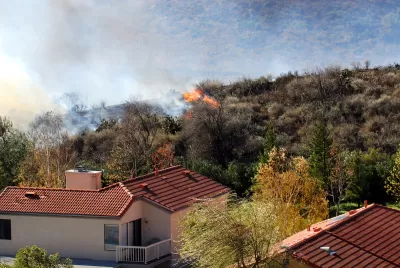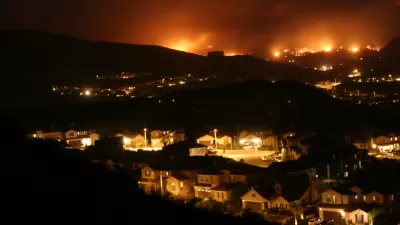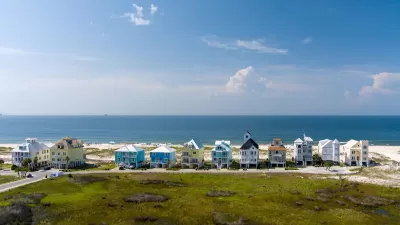Homeowners in places at risk for wildfires and other disasters find it harder than ever to secure an affordable insurance policy as companies leave some states altogether.

Home insurance companies are abandoning some markets in the Western United States as increasingly devastating and unpredictable wildfires and other disasters drive up costs.
“According to a report from the nonprofit climate research firm First Street Foundation, 39 million homes nationwide are at risk of losing their insurance due to climate hazards,” writes Kylie Mohr in High Country News, prefacing an interview with former California insurance commissioner Dave Jones.
According to Jones, the main driver of higher insurance premiums is climate change. “Until we stop using fossil fuels and reduce greenhouse gas emissions associated with other sectors of the economy, we’re going to continue to march steadily toward an uninsurable future,” Jones said.
Jones noted that “One thing insurers could do would be to transition out of fossil fuels and other high greenhouse gas-emitting industries as an investor.” They could also adjust their models to account for “landscape-scale forest management” initiatives that reduce fire risk.
Mohr adds that “Recently proposed changes to California’s insurance regulations may allow insurance companies to include wildfire-preparedness measures, such as safety certifications and prescribed burns, in their pricing models.”
Jones also suggests that states should adopt stringent building codes to make structures more fire-resistant and provide assistance for retrofitting programs. When it comes to insurance assistance programs like California’s Fair Access to Insurance Requirements (FAIR) plan, Jones says “Even though it’s expensive, I would argue strongly against artificially suppressing the rates of the FAIR plan, because then you start sending the wrong signal about the risk in certain areas due to climate change.”
FULL STORY: Homeowner’s insurance is going up in smoke

Manufactured Crisis: Losing the Nation’s Largest Source of Unsubsidized Affordable Housing
Manufactured housing communities have long been an affordable housing option for millions of people living in the U.S., but that affordability is disappearing rapidly. How did we get here?

Americans May Be Stuck — But Why?
Americans are moving a lot less than they once did, and that is a problem. While Yoni Applebaum, in his highly-publicized article Stuck, gets the reasons badly wrong, it's still important to ask: why are we moving so much less than before?

Research Shows More Roads = More Driving
A national study shows, once again, that increasing road supply induces additional vehicle travel, particularly over the long run.

Using Old Oil and Gas Wells for Green Energy Storage
Penn State researchers have found that repurposing abandoned oil and gas wells for geothermal-assisted compressed-air energy storage can boost efficiency, reduce environmental risks, and support clean energy and job transitions.

How Protecting Kauaʻi’s Forests Safeguards Fresh Water
A University of Hawaiʻi study shows that protecting Kauaʻi’s native forests from invasive species significantly boosts groundwater recharge, making it a cost-effective strategy to secure fresh water and enhance climate resilience.

Gary, Indiana to Expand Transit Service, Bike Share
The city plans to launch a bike share system in April and expand service on its bus routes.
Urban Design for Planners 1: Software Tools
This six-course series explores essential urban design concepts using open source software and equips planners with the tools they need to participate fully in the urban design process.
Planning for Universal Design
Learn the tools for implementing Universal Design in planning regulations.
City of Moreno Valley
Institute for Housing and Urban Development Studies (IHS)
City of Grandview
Harvard GSD Executive Education
NYU Wagner Graduate School of Public Service
City of Cambridge, Maryland
Newport County Development Council: Connect Greater Newport





























